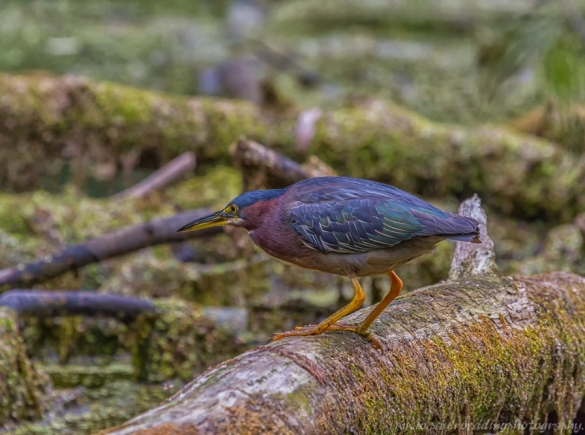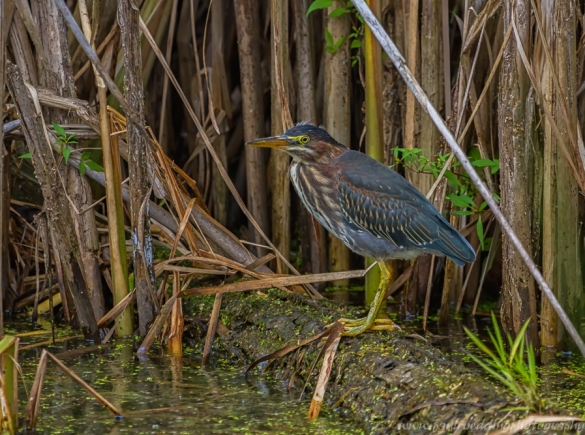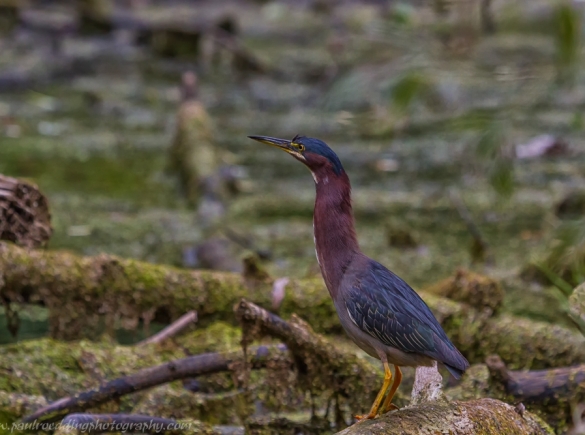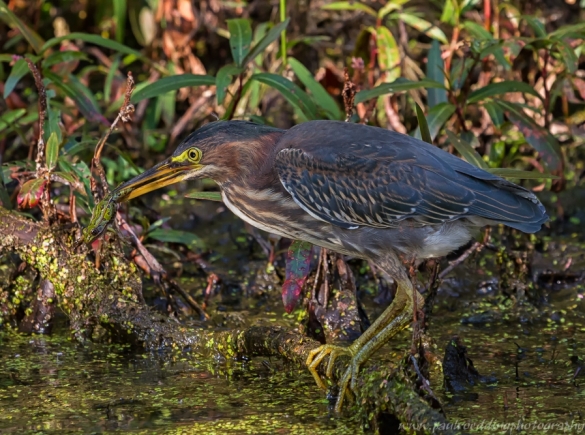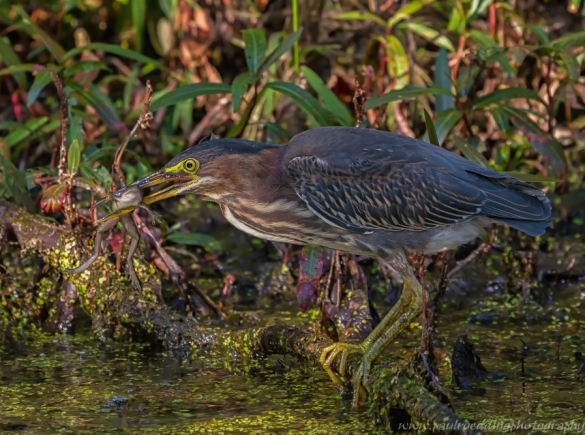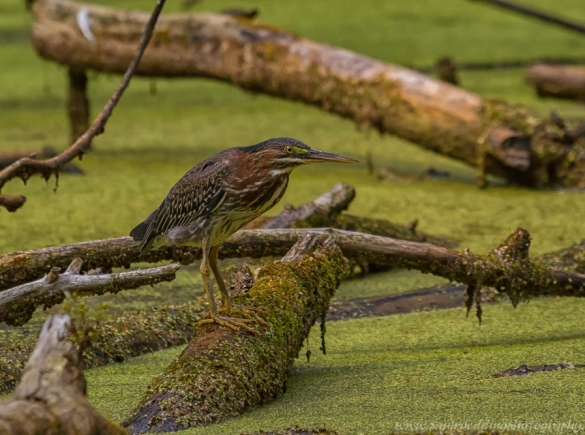
Each year, waves of birds pass through Southwestern Ontario in early May. Like most other birders, this is my favourite time of year, and I book vacation accordingly during the first two weeks of the month. I try to get out birding every day visiting many of my favorite areas. Some of these locations are a 2-hour drive away while others are mere minutes from home. As is the case every year, May has been quite productive thus far with a variety of species observed and photographed.

Last Monday, I made the drive west to Point Pelee National Park. Arriving at the park shortly after 9 a.m. I found a parking spot at the visitor centre and from there it was a short shuttle ride to the tip to begin my day of birding. At the tip, Baltimore Orioles were seen reverse migrating as they headed south out over Lake Erie. Horned Grebes were observed to the west while a mix of warblers foraged high in the treetops on the east side as the morning sun had the insects and thus the birds quite active.

Once finished at the tip, I was back on the shuttle heading north to complete a loop of the Woodland Nature Trail. Parts of this trail were quite wet and a small section was underwater. Despite this, I was able to cover most of the trail and was treated to some great views with the highlight being a Blue-winged Warbler feeding low to the ground.

Having completed the Woodland Nature Trail, I went back to the car to re-hydrate and have a quick sandwich before heading to the Tilden Woods Trail. While having my lunch, I overheard a woman talking about a red morph Eastern Screech-Owl on Tilden. Locating these small owls in a forest is like finding a needle in a haystack, but I figured there would be several people gathered in the vicinity of this bird. Sure enough, shortly into the trail was a congregation of owl seekers. Thanks to other birders describing where to look among the maze of branches, I was able to locate the owl. After adjusting my camera settings I managed to obtain focus through the leaves and limbs and capture several images. As an added bonus, this owl had its eyes open and was staring at the gaggle of birders admiring its beauty.

To wrap up the day I walked the trail along West Beach. Warblers, thrushes, and a kingbird were noted, but I was most excited about the stunning male Indigo Bunting perched beautifully in the sun. In total, I observed 61 species under sunny skies. A great day birding for sure and quite typical for the first week of May at Pelee.

Tuesday morning I awoke to rain. This didn’t dampen my spirits as I had an appointment with my physiotherapist scheduled and was hoping to head out birding in the afternoon after the showers quit. Birding after a rain is always productive especially in May when migrating songbirds actively feed after seeking shelter from the precipitation. By late afternoon the sun was out, so I headed to the Westminster Ponds ESA. For those of you who attended my How To Photograph Birds presentation last month I focussed my efforts in the area I shared with you. As expected, the birds were positioned out of the strong west wind actively feeding on insects that had emerged with the warming sun.

In total 50 species were seen in only a few hours including 8 different warblers. Palm Warblers were the most abundant with Yellow-rumped a close second. Nashville, Yellow, Black-and-White, Chestnut-sided, Black-throated Blue, and American Redstart were the other warblers present. Happy with my observations, I returned to this same area Wednesday morning and was treated to much of the same with the addition of Black-throated Green Warblers.

After spending the morning birding, I headed home to prepare for my presentation that evening for the Woodstock Camera Club. What a fun night it was talking about bird photography with so many great people who share the same passion. The comradery of the group was evident as there were plenty of jokes and laughter which only added to the enjoyment of the evening. Thanks again to Kim and Linda for inviting me to speak.

My best birding of the week was Friday at Rondeau Provincial Park where I observed 79 species. Blackburnian and Cape May Warblers were seen throughout the park in large numbers and were two of the more prevalent birds. Eastern Towhee, Northern Waterthrush, Ovenbird, and Northern Parula were also observed. With the strong west wind off Rondeau Bay, I concentrated my birding in the centre and east side of the park. The most productive areas were Warbler’s Way (formerly known as the Maintenance Loop), Harrison Trail, and Tulip Tree Trail.

Scarlet Tanagers were observed in good numbers at Rondeau. These vibrant red birds are simply stunning and always a treat to see. The strong winds and lack of leaf cover in the forest canopy kept most of the birds low to the ground making for optimal views and photos. It was a cool, cloudy day for the most part but when the sun did peek out and the temperature rose a few degrees, the birds became even more active.

With the amount of rain we received this past week, all of the areas I birded were wet and muddy. I recommend wearing rubber boots if you plan on visiting any of the aforementioned locations. I’ve never considered rubber boots to be the most comfortable footwear, but knowing the amount of rain forecast and expecting messy conditions, I went out and bought a new pair. Fully expecting sore feet, sore legs, and a sore back I was surprised at how comfortable these boots are. Purchased on sale for $30 at my local TSC Store, I am very happy with these Oxgear boots. If you are looking for a pair of rubber boots, these are definitely worth checking out.

Along with plenty of warblers, large quantities of Ruby-crowned Kinglets, White-throated Sparrows, and White-crowned Sparrows were observed in all areas I visited this past week. We can expect another big wave of birds in the coming weeks, so if you haven’t had an opportunity to get out birding there is still lots of time. In town, the leaves are emerging fast which makes locating and photographing birds a challenge; however, closer to Lake Erie where temperatures are a few degrees cooler, the leaves are significantly behind offering better views and photo opportunities.

With another week of vacation to go, I am looking forward to more birding. Given the day I had at Rondeau, I plan on getting down there again this week but will also do more birding here in London as well. The warmer temperatures predicted mid-week will make for comfortable conditions and active birds. An abundance of birds in the area and more on the way mean it’s the perfect time to get out birding. If you have some time this week, head out to your favourite spot and reap the benefits of May birding.
Good birding,
Paul










